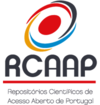New papers published in volume 7 of H2D
The H2D – Journal of Digital Humanities is pleased to announce the publication of four new articles in its continuous publication volume. All articles are available in open access on the journal’s website.
H2D operates on a continuous publication model, welcoming submissions of original articles, reviews, case studies, and critical essays that explore the intersection between the humanities and technology. We therefore invite the academic and professional community to submit their work and contribute to the advancement of the scientific debate in digital humanities.
Recently published articles:
Revisão Sistemática de Literatura como Base para a Construção de um Catálogo de Apoio Terapêutico e Educacional para Pessoas com Transtorno do Espectro Autista (TEA)
Authors: : Alexandre Louzada, Mónica Ferreira da Silva, Tiago França
Pseudo-Consciência em Modelos de Linguagem: implicações epistemológicas, tecnológicas e éticas a partir do Hermes 3.2 3B
Author: : José Augusto de Lima Prestes
Investigando Modelos de IA: GPT-4, Sabiá-3 e DeepSeek-R1 na Interpretação de Notícias Históricas sobre a Ditadura Militar no Brasil
Authors: : Gustavo Moreira Calixto, Alan César Belo Angeluci, Elias Cunha Bitencourt
Além dos muros: a exclusão digital como obstáculo invisível à formação continuada de professores da educação prisional no Rio de Janeiro
Authors: Marcio Ferreira, Sheila Arantes, Jorge Mansur





